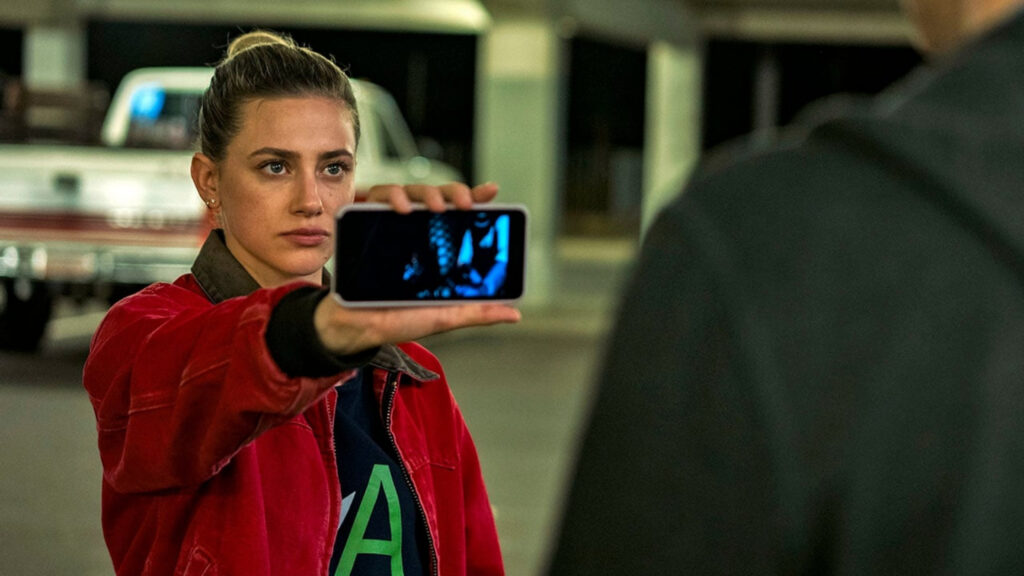Movie blog — American Sweatshop (2025): scrolling past horror, living with the images.
When a film tackles the modern malaise of being constantly and involuntarily exposed to the worst of humanity, it has to do more than shock us — it has to make that exposure feel consequential. American Sweatshop, directed by Uta Briesewitz, is a tense mystery-thriller that aims exactly at that pulse: the psychological toll on people whose job is to look at the internet’s darkest images so the rest of us never have to. It’s a film about desensitization, moral responsibility, and how the line between staged and real violence can collapse into trauma. The movie never becomes easy to watch — nor should it be.
Quick facts (so you can skip to the parts you care about).
Director: Uta Briesewitz.
Writer: Matthew Nemeth.
Lead: Lili Reinhart as Daisy Moriarty, a content moderator who discovers a disturbing video and tries to trace whether it’s a real crime.
Premiere: SXSW (South by Southwest) Film & TV Festival, March 2025.
U.S. release / distribution: Acquired by Brainstorm Media and released on VOD in the United States (September 19, 2025) after festival play.
Runtime: ~100 minutes.
How many cast members — and who carries the movie?
The credited roster for American Sweatshop includes roughly a dozen named principal players and a larger supporting ensemble made up of other moderators, company managers, and incidental characters who populate Daisy’s world. The top-billed cast includes Lili Reinhart (Daisy Moriarty), Daniela Melchior, Joel Fry, Christiane Paul, Tim Plester, Jeremy Ang Jones, Josh Whitehouse, and several others — with IMDb and the film’s press notes listing additional names in smaller roles. Practically speaking, the story orbits a compact group (the moderation team, Daisy’s friends, and a few suspects), but the credits reflect a fuller cast used for the world-building required by the script.
This is a lead-actor’s movie. Lili Reinhart’s Daisy is the emotional and narrative hub; the film’s choices, pacing, and moral questions are filtered through her experience. If you want to call that the “means character” (the viewpoint character whose choices carry the story), it’s Daisy every time — her reactions to what she sees, her decisions to investigate a questionable clip, and the unraveling of her private life under the weight of her job are the structural spine.
The box-collection story (short and important): not a theatrical tentpole.
American Sweatshop premiered at SXSW and then was picked up for North American distribution by Brainstorm Media. Instead of a wide theatrical run, Brainstorm released the movie on VOD (digital rental/purchase platforms) on September 19, 2025. That release pattern — festival → limited window → VOD — is common for wary, mid-budget thrillers and means the film’s “box office” numbers are not the primary indicator of its reach; digital rentals, streaming deals, and critical conversation matter more for films of this type. Public box-office trackers show little or no wide-theatrical gross comparable to mainstream studio releases because the film’s exposure strategy was intentionally narrow. If you’re looking for blockbuster receipts, this film wasn’t set up to chase them.
What kind of movie is this — the niche and tonal map.
Label it: psychological tech-thriller / workplace drama. American Sweatshop sits in a small but growing sub-genre of films concerned with the human costs of digital labor — stories about moderators, contractors, and the invisible armies that police modern media platforms. It’s not a courtroom or investigative procedural so much as an intimate descent into secondary trauma: the moderators’ cubicles, the blue light glow, the endless content queue, and the rituals people invent to survive repeated exposure to cruelty and sexualized violence. The film’s title, blunt and sardonic, hints that it treats content moderation as a modern form of factory work — relentless, badly paid, and ethically freighted.
Tonally, it’s subdued, clinical, and occasionally claustrophobic. The movie prefers tight close-ups and point-of-view edits to scream loud; it wants you to feel the residue of what Daisy sees rather than parade the gore on screen (the filmmakers smartly withhold explicit imagery for much of the runtime, forcing the audience to imagine). That restraint makes the movie’s few confrontations land harder.

Plot in a paragraph (no spoilers, then spoilered deep dive).
Short version: Daisy Moriarty, a content moderator, notices a violent clip in the flow of violent or sexualized content that seems to show an act that may be real — not staged. Haunted by the clip and dissatisfied with the company’s internal handling, she begins an informal investigation that drags coworkers, friends, and outsiders into danger. The film follows her attempts to trace the clip’s origin while grappling with PTSD, moral outrage, and the professional imperative to “keep moving” through the queue.
Deep dive / major beats & themes (spoiler-light but substantive)
The film opens on the banal: Daisy’s workstation, a cubicle of monitors, and a queue of content warnings. Director Uta Briesewitz — a cinematographer-turned-director — uses micro-movement and ocular framing to make the viewer inhabit Daisy’s eyes. The first act establishes the monotony of the job and Daisy’s personal life: her strained relationships, small domestic rituals, and the coping mechanisms (audio books, blackout curtains) she uses to make it through an eight-hour shift. Then the inciting incident: a clip titled inoffensively that dissolves into something horrific. Daisy feels the hair-trigger difference between a manufactured special-effects video and something that may be a real victim. The film wisely keeps the footage off-screen for long stretches, using sound, reaction shots, and Daisy’s obsessive replaying to generate dread.
As Daisy queries the platform’s internal tools and is stonewalled by corporate protocols and legalistic disclaimers, she drags a couple of coworkers into her sleuthing. Those relationships are the emotional anchor: one colleague (played with quiet ache by Daniela Melchior) has mapped how policy decisions are driven by metrics; another (Joel Fry in a murkier role) has his own survival strategies. The script complicates Daisy’s investigation by suggesting alternative explanations — a viral hoax, a staged performance, or a criminal act — and the audience is kept in the uncertain middle. Is the clip an elaborate prank? A deepfake? A real, prosecutable crime? The ambiguity is both the film’s power and, for some critics, its structural weakness.
Midway through, American Sweatshop pivots from inside-company satire to a more classical thriller: Daisy’s inquiries attract attention, she receives threats, and the moral stakes become physical. The film’s second half balances the internal (Daisy’s fraying mental health) against the external (a menacing, possibly violent person who might be connected to the clip). The ending resolves the immediate mystery but refuses neat catharsis: the consequences of prolonged exposure to trauma remain with Daisy. The final scenes are quieter than you might expect — an interrogation of how we process evidence in the digital age and who is left to carry the burden when “content” is what someone else suffered.
What works — and what doesn’t
What works
- Lili Reinhart’s performance. Critics largely agree the film stays afloat because of her: Daisy is shot with nuance, small tics, and a believable strain of surviving a job that asks you not to feel. Reinhart communicates cumulative trauma without melodrama.
- The movie’s restraint. Deliberately withholding graphic images and focusing on aftermath (sound, reaction, replay) forces the viewer to imagine — often far worse than anything shown. This choice elevates the film above shock value.
- Topical urgency. Films about gigged, outsourced, or invisible labor are culturally resonant, and American Sweatshop leverages that urgency to ask real questions about corporate responsibility and the mental health of essential but overlooked workers.
What doesn’t
- Narrative follow-through. Several reviewers argue the film American Sweatshop flirts with harder conclusions — systemic accountability, legal reform, or a true investigative arc — but stops short, preferring to keep the plot narrowly personal. That leaves some viewers wanting more teeth in the social critique.
- Occasional pacing lapses. The film’s cautious approach sometimes tips into sluggishness; the investigation’s procedural bits sometimes feel undercooked. Critics who wanted a leaner thriller found the middle act indulgent.
Final verdict — for whom, and why it matters.
American Sweatshop won’t be a blockbuster event American Sweatshop film, but it doesn’t pretend to be. Its ambition is narrower and — in many ways — more necessary: to make a viewer live through a content moderator’s day and to leave the theater thinking about the human hands behind every takedown notice and content policy change. For audiences who appreciate character-driven thrillers with social subtext (and for anyone curious about digital labor ethics), this is essential viewing; for those expecting a full-throttle conspiracy thriller, it will frustrate.
The film’s cultural value goes beyond box office. It puts a human face on an invisible, vital labor force and forces the conversation about how societies outsource moral filtering to fatigued individuals. In an era when online gore, disinformation, and exploitative media are part of the architecture of attention, American Sweatshop insists we ask: who cleans the mess, at what cost, and who pays for their care? That question alone makes the film worth your time.





